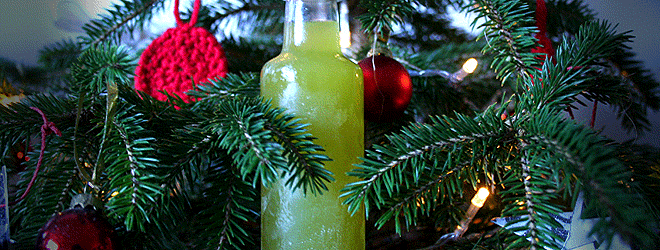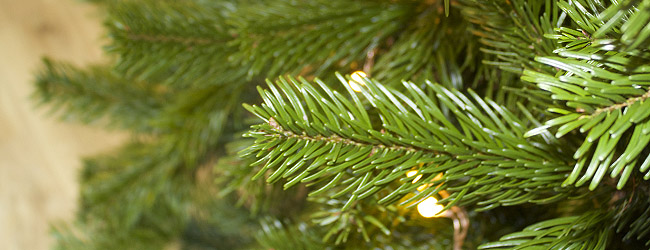We’re used to planting potatoes inspring, but seed spud aces PotatoHouse.co.uk have sent us four varieties* that don’t get buried under compost until July – with the harvest being ready in time for Christmas. We wanted to know more about how a spud can be produced for such late cropping, and if there was anything we needed to do differently to ensure a festive harvest, so fired over a few questions to Potato House’s Amy Skea…
Digging a spud fresh for Christmas dinner sounds like a great idea. How many varieties can you grow and when do you plant them?
This is our first time offering late summer planting. We specifically kept four varieties back in our cold storage for this purpose. It may only be summer, but the delight of homegrown, tender new potatoes on Christmas Day is closer than you may think and possible with a little know how. This means that a potato planted in July or August can produce your ‘roasties’ and new baby potatoes for Christmas Day!
Are there any differences in how you grow them from earlier spuds? Do hey need chitting? And what about frost protection?
It’s useful to know what makes a winter seed potato. The simple answer is that they have been in cold storage all spring to delay their growth and taken out from June so that they are ready to start their 12 to 14 week plant-to-harvest cycle. It’s also useful to know that potatoes harvested in summer require a period of dormancy before they can be used as seed potatoes, so replanting these straight away won’t work. Potatoes planted in summer generally will not need to be chitted, although you can do if you want.
Growing potatoes at any time of the year is not risk free, and there are additional things to watch out for with late planting. Potatoes grown outside in summer and autumn are especially prone to potato blight. However, those in containers (which can be moved in doors) are not usually at risk. We pick all our varieties to grow to be blight resistant and the four different varieties we have for summer planting as especially blight resistant. Most of our crops are organic so we rely on natural blight-resistance.
Keep an eye on the weather forecasts as early frosts will blacken foliage and weaken plants; fleece protection may be needed for outdoor crops.
We like a good crispy coating to our roast spuds. What varieties are best at achieving roast perfection?
Floury types are the best for roasties! Out of the varieties we have just now we would recommend Record. There are so many ways to cook the “best roast potato” and we would say to par-boil them and score them with a fork, and then coat them in fat/oil.
What kind of yields can we expect? Can they be dug before Christmas and how long after Christmas can we dig and store them?
Once foliage dies down in September or October, remove and compost it. On light soils in a sheltered garden, piling some earth up over the row where you know the potatoes are and covering it with straw to insulate tubers may be sufficient protection to store them in the ground until Christmas. In cold areas, or where soils are wet and heavy, it is better to lift tubers by the end of October and re-bury them in coarse sand or soil in a frost-free place (such as a garden shed) until you need them. Lifting and storing potatoes in bags in a frost-free shed is also recommended. The potatoes may be slightly smaller than a summer harvest, but a lot will depend on the weather.
You have your own spud breeding programme. When did you start breeding spuds and why have you put so much effort into the late varieties?
Andrew’s grandfather was involved in seed potatoes from around the 1950s and so potatoes are in the blood! We are breeding new varieties and our hope is to get a great blight-resistant variety which is good looking and tasty! So far our only registered variety is Mary’s Rose, but we have a wave of new red and blue fleshed varieties in the pipeline as well as more disease resistant white and cream fleshed varieties.
What is the basic process for breeding a potato?
This is a fascinating but time-consuming activity. Most of our breeding is done in association with the James Hutton Institute in Dundee – they hand pollinate each plant so we know what has been crossed with what. We will start with 1000s of seedlings in trials whittling them down each growing season until we select one or two individuals to put through registration. In equal measures we are looking for a tasty, good looking variety which has a high resistance to diseases and good yield coupled with the “type” that UK consumers enjoy! For example, our European cousins prefer more yellow flesh. It is equivalent of buying 20,000 lottery tickets hoping your number will come up in 10 years time.
What, in your opinion, constitutes the perfect potato?
How long do we have?! The reds, the pinks, blues and purples…… all have their own quirks and are delicious in their own way. From a new potato, dug out 20 mins previously and covered in butter, to a lavish dauphinoise dish or a jacket potato, we don’t go many meals without potato in our house!
Obviously potatoes will be the centrepiece of your Christmas dinner, but what other trimmings will you be enjoying and what drink will be served to best show off the potatoes’ magnificence?
Roasted Arran Victory is the centrepiece of our Christmas dinner table, along with new potatoes, although we usually have turkey or beef as a side dish! Our Christmas always revolves around family, and lots of good food and wine, and we are lucky that we have great experimental chefs in the extended family! No two Christmas dinners are ever the same. Christmas presents opening with a glass of fizz is the best feeling all year and then some lovely wines and finishing off with some of my mother’s home made sloe gin… I am looking forward to it already!
Fancy some summer planting spuds? Then get your order in here.
*Those four varieties are: Sarpo Kifli, Colleen, Record and Maris Peer








Fantastic, Nick, I hope you get a great crop! If you or any of your readers have any questions about potatoes, especially late harvest, please let me know. We are really looking forward to seeing how these get on!
Amy
#tiptoptatties
[…] Moyles from Two Thirsty Gardeners did a great Q&A with us about the things to watch out for with late season potato planting. […]